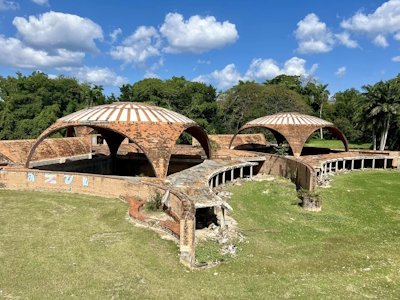National Schools of Art, Cubanacan

National Schools of Art, Cubanacan is part of the Tentative list of Cuba in order to qualify for inclusion in the World Heritage List.
The set of buildings conforming the National Schools of Art, created in 1962, constitutes one of the most outstanding examples of contemporary Cuban architecture, with an acknowledged artistic value, reuniting testimonial values stemming from the historic moment in which it was built to serve as a the training school for artists and is considered the most advanced example of an all-encompassing and multidisciplinary pedagogical and artistic project.
Map of National Schools of Art, Cubanacan
Load mapThe coordinates shown for all tentative sites were produced as a community effort. They are not official and may change on inscription.
Community Reviews
No reviews yet. Be the first!
Site Info
- Full Name
- National Schools of Art, Cubanacan
- Country
- Cuba
- Added
- 2003
- Type
- Cultural
- Categories
- Structure - Science and Education
- Link
- By ID